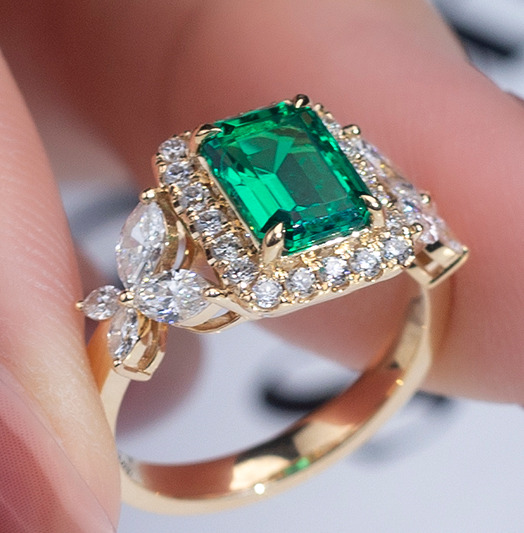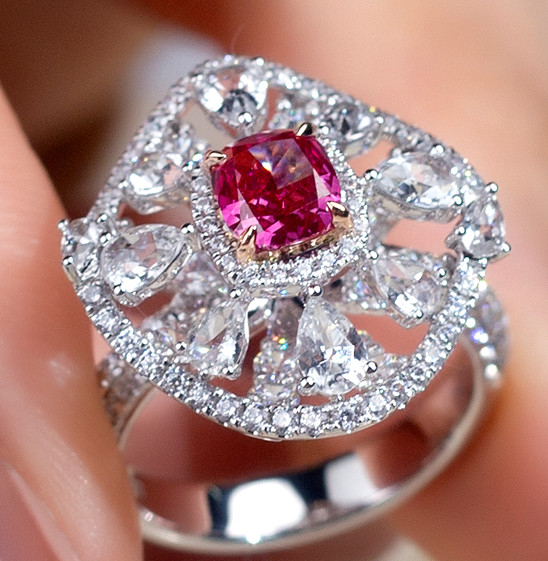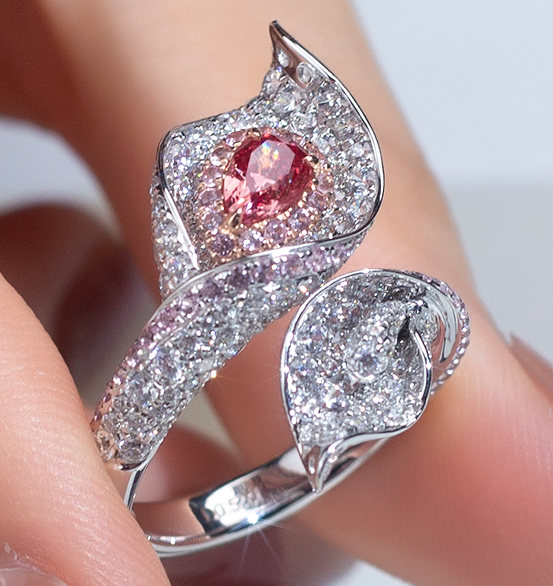
Lab-grown diamonds are not only more sustainable but also offer a comparable sensory experience to natural diamonds.
If the boom in lab grown diamond is any indication, it is that there is a small group of buyers willing to forgo natural rarity to get almost the same product at a fraction of the price . According to Verified Market Research's "Global Synthetic Diamond Market" report, this "niche" will be worth $21.2 billion in 2021 and is expected to reach $38.9 billion by It is expected to reach $38.9 billion by 2030. Another report from Research and Markets shows that the market grew by 50% between 2015 and 2022.
But what exactly are synthetic diamonds and how close are they to "real" diamonds? According to Tobias Kormind, co-founder of 77 Diamonds, Europe's largest online diamond retailer Tobias Kormind, co-founder of 77 Diamonds, Europe's largest online diamond retailer, says the average consumer can't tell them apart from natural gemstones. "From a chemical and physical point of view, natural diamonds and lab grown diamond are identical and can only be identified by specialized equipment."
Natural diamonds are made from carbon forged under pressure at high temperatures and brought out of the earth's mantle by volcanic eruptions. Trace amounts of minerals and chemicals in the carbon affect the color and clarity of the stone color and clarity: for example, a blue diamond gets its color from traces of boron.

This heating and pressurization process can be greatly accelerated in a laboratory setting, creating stones with the same hardness and refractive index. The first man-made gem-quality diamond was 1971, and the technology has been greatly improved since then.
In 2018, the U.S. Federal Trade Commission (FTC) revised its definition of a diamond, stating that "it is now possible to create products with essentially the same optical, physical, and chemical properties as mined diamonds, physical and chemical properties of mined diamonds, so defining a diamond as 'natural' is no longer accurate."
The International Man-made Diamond Association's definition is consistent: "The natural growth process of man-made diamonds under laboratory conditions is identical to that of single crystals produced underground, both of which are 100% carbon structure."
This change in definition is also reflected in the continuing relaxation of consumer attitudes. With biggest lab grown diamond production at 9.13 million carats in 2022, according to a Research and Markets 2023 report, the ability to mass produce has spawned a lab grown diamond as the centerpiece of a new type of jewelry.
The growth of this market segment has prompted the natural diamond industry to respond by developing differentiation guidelines for lab grown diamond. Although they are not the first man-made stones to enter the market, they share the same characteristics as natural diamonds. they have the same characteristics as natural diamonds, making them more competitive than any of their predecessors.
The recently opened "Cartier and Women" exhibition at the Hong Kong Palace Museum features a collection of iconic jewelry, including Grace Kelly's diamond engagement ring and Wallis Simpson's diamond ring. The exhibition "Cartier and Women", recently opened at the Palace Museum in Hong Kong, featured a collection of iconic jewelry, including Grace Kelly's diamond engagement ring and Wallis Simpson's famous round sapphire Panthere de Cartier pendant.
Among the largest jewels in carat was a replica of the Toussaint necklace. The original diamond was created for the Indian prince of Navanagar, with the 136.25 carat Queen of Holland diamond at its center, but is said to have been broken down for other pieces.
This replica was recreated by Cartier from archival sketches for the film "The Conceit: The Beauty of the World". It initially featured colored diamonds, but was later It was recreated with cubic zirconia, a synthetic stone traditionally used in low-end fashion jewelry, but also used by luxury brands as a substitute for natural stones in imitation pieces.
Cubic zirconia has never been "real" enough to attract the attention of luxury brands. However, the same characteristics of lab grown diamond and natural stones have led diamond producers and De Beers, a luxury jeweler, created the cultivated diamond brand Lightbox.
From a chemical and physical standpoint, natural diamonds and lab grown diamond are identical. Kormind believes that lab-grown products appeal to a younger Gen Z group that is more aware of the environmental impact and conflicts of mining.

It also appeals to their smaller budgets: he notes that a 1-carat G color VS2 clarity diamond with no fluorescence and an excellent cut sells for about HK$45,500, while an identical cultivated diamond sells for HK$6,100.
These younger demographics may be the reason why lab grown diamond are mostly available in more delicate and smaller designs. Indian diamond producer Hari Brijesh Dholakia, junior CEO of Krishna Exports, believes that although they are readily available, traditional luxury companies are unlikely to use them. He says, "The fine jewelry segment typically uses larger, higher-quality diamonds that have not yet been grown in lab-grown forms that are not yet widely available."
Dholakia believes these customers with high spending power, and those who buy for emotional and ritual reasons, will always prefer natural stones. "Those who want to to purchase an engagement ring or other high-end jewelry may value the rarity and uniqueness of natural diamonds more and be less likely to consider lab-grown diamonds."
De Beers' 2019 Diamond Insights Report shows that unique natural stones are more attractive to brides, and in the U.S. and Canada alone in 2019, diamond engagement rings dominate with a market share of $28.6 billion. It is expected to reach $39.7 billion in 2027. As demand increases, costs will only decline. "
The price of lab grown diamond will continue to fall and they will at some point cease to be precious and may no longer be suitable for marriage." Eddie LeVian, CEO of U.S. jeweler Le Vian, whose ancestors guarded 18th century Persia, believes lab grown diamond will never replace natural diamonds with the famous Koh-i-noor diamond. "Until 200 years ago, diamonds and gemstones were reserved for royalty. They symbolized the authority and status of royalty. In the 21st century As the wealth of the great Asian countries - especially China and India - has increased, the demand for fine natural diamonds and gemstones has far outstripped the limited supply of these rare luxury items. . There will always be consumers who value the rarity and uniqueness of natural diamonds and are willing to pay high prices for them."
As the cultivated diamond industry grows, so does the demand for natural diamonds. De Beers' Diamond Insights 2022 report shows that global demand for natural diamond stone jewelry demand is up 10 percent over the 2019 pre-pandemic.












